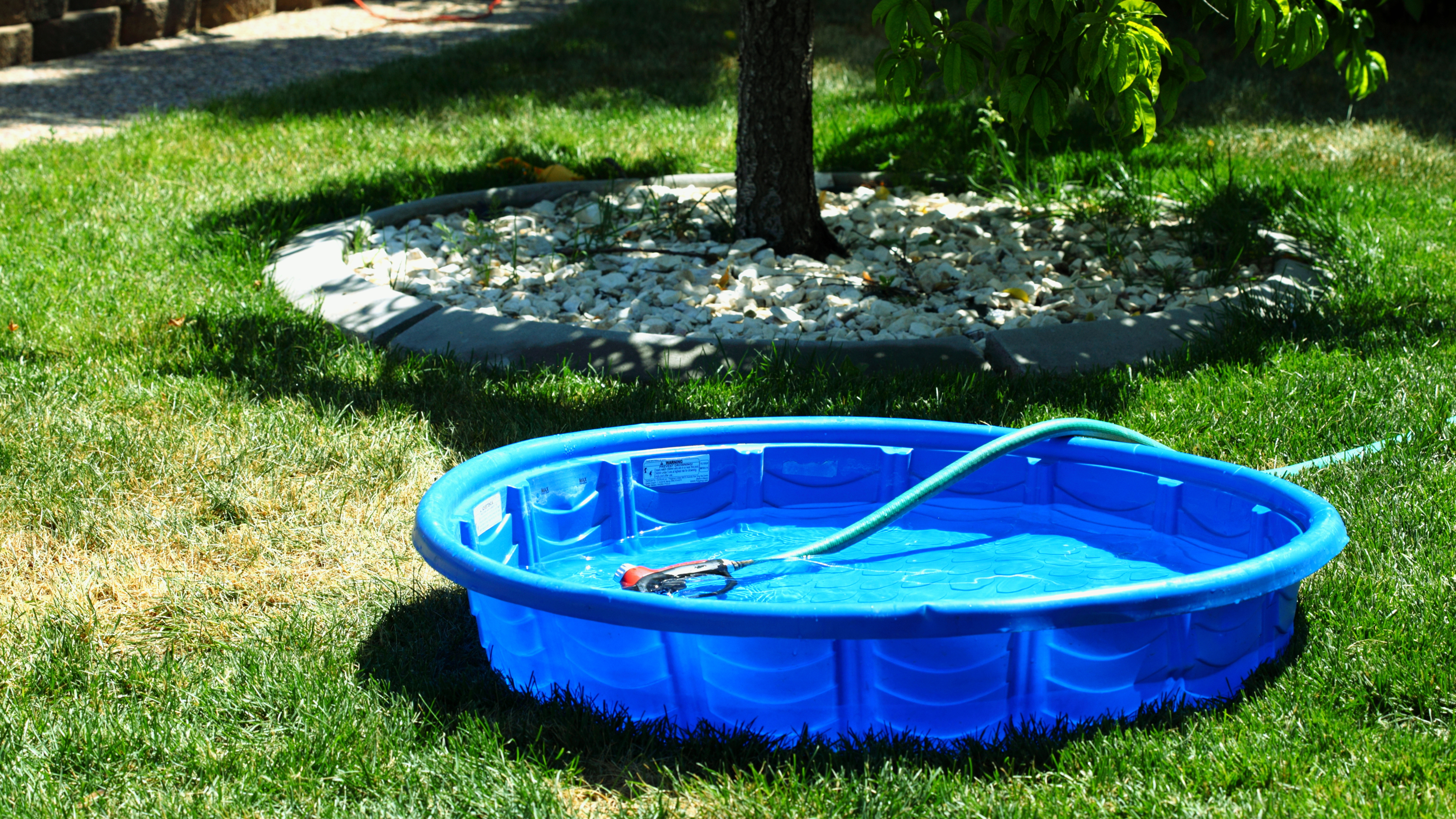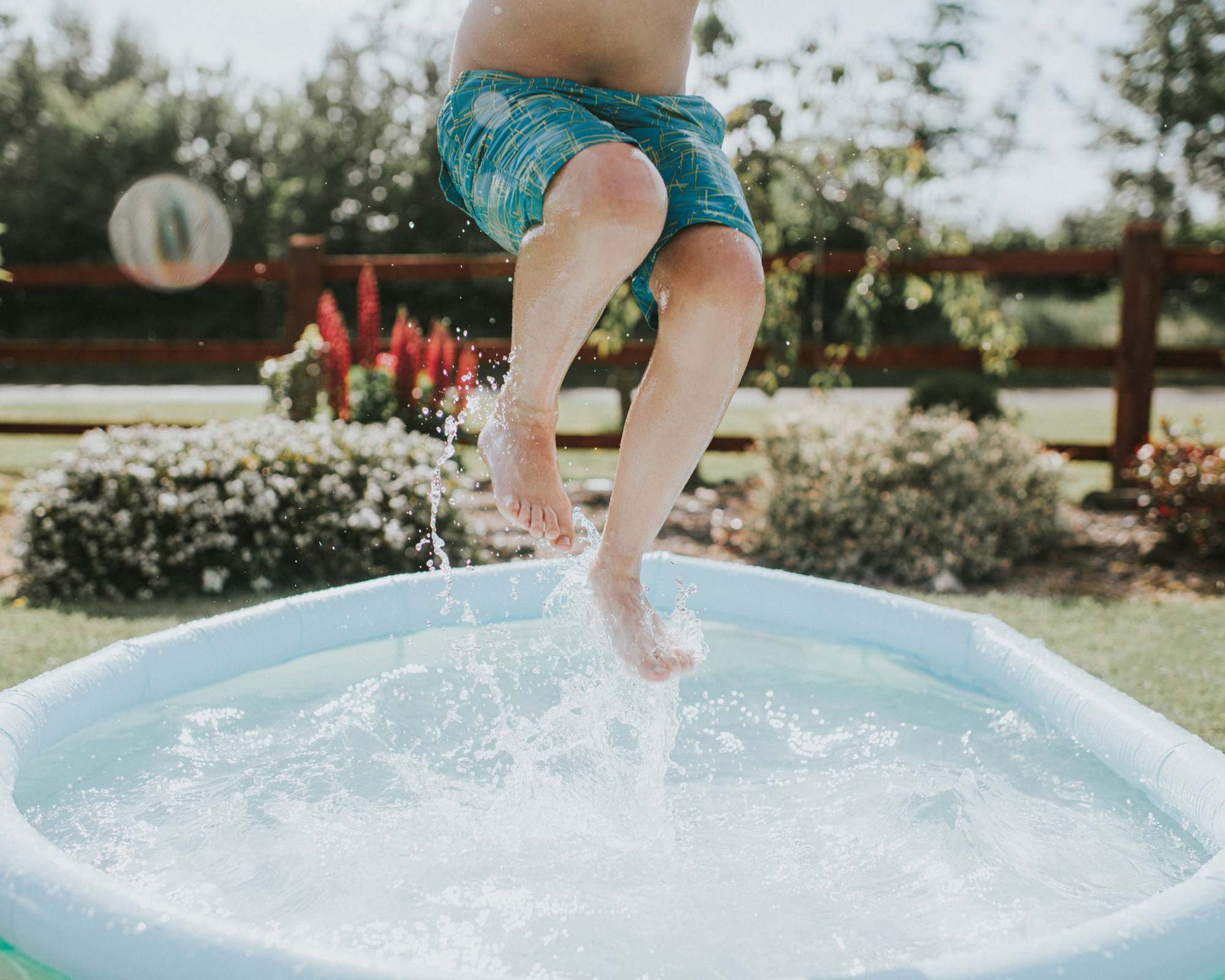Should you use Epsom salt in a kiddie pool to keep it clean? Here's what experts say
Is the popular hack that uses Epsom salt in a kiddie pool a good idea? Find out before you stock up on salt this summer

Epsom salts in a kiddie pool – an all-natural solution for keeping paddling pools clean, or an ineffective fad? Epsom salts are a popular magnesium salt commonly used to treat aches and pains in the bath, as well as for gently cleansing the skin. But can they be used to keep the water in a kiddie pool safe for the little ones?
Paddling pools are some of the best garden activities for kids in the warmer months. But while there is a strict protocol for keeping the hot tubs clean (you must use chlorine), there is less information out there on effective ways to keep paddling pools – which don't have a filtering system as such – clean.
Should you use Epsom salt in a kiddie pool?
Using Epsom salt in a kiddie pool is frequently described as a useful hack online. But is it actually a good idea in family garden ideas? On the face of it, the idea behind adding salt to a paddling pool makes sense, since a saline environment is effective at killing some (though not all) bacteria.
Salt is often presented as a healthier alternative to adding chlorine to a kiddie pool, since saltwater is gentler on the skin. This is particularly true of Epsom salt, which has a very different chemical composition from regular salt – it is magnesium chloride rather than sodium chloride.
Tim Sidebotham, Ecommerce Director at All Round Fun, a retailer that sells kiddie pools, acknowledges the beneficial uses of Epsom salts: 'Epsom salts are often used in the bath as a relaxing muscle soak, but many people have found alternative ways to use them such as cleaning around the home and to help fertilise plants.'

Having said that, Tim does not recommend using Epsom salts for cleaning paddling pools: 'One of the main reasons for not using Epsom salts to clean a paddling pool is that the water needs to be hot in order for the crystals to dissolve – using the salts in cold water could have the potential to be abrasive to the lining, ultimately damaging the pool.' The crystals will ultimately dissolve, but it will take a while, and you'd need to keep your kid out of the pool for all of that time. Not ideal.
More importantly, however, Tim points out that 'there is little evidence or scientific proof to show that Epsom Salts acts as a disinfectant, which could leave harmful bacteria lurking in the paddling pool, even after cleaning has taken place.' There's also no evidence that magnesium chloride (Epsom salt) is any better at disinfecting than regular table salt, so you might as well use the cheaper alternative.

What is the best way to keep a kiddie pool clean?
The very best way to keep a paddling pool is to empty it after every use and give it a thorough clean before it gets used again for garden activities for kids.
Tim said: 'Our advice for families who are using a paddling pool this summer is that ideally, you should empty the pool water each day and clean it thoroughly with a proper paddling pool treatment. However, if you’re trying to save water and avoid water-logging your lawn, then the next best thing is to secure your pool with a cover and add child-safe chlorine tablets to the water.'
Pressure washer experts from Kärcher agree, pointing out that 'paddling pools provide ideal conditions for algae and bacteria to grow which can be harmful. Draining and drying your paddling pool after each use will help stop bacteria from forming. Use the best pressure washer to hose down the paddling pool, particularly focusing on any ridges in the plastic to remove dirt and grime before and after each use.'
Cleaning a kiddie pool after each use may be a hassle, but it's the best and easiest way to keep it safe for the little ones – and will save you needing to buy pounds and pounds of salt.
Anna writes about interior design and gardening. Her work has appeared in Homes & Gardens, Livingetc, and many other publications. She is an experienced outdoor and indoor gardener and has a passion for growing roses and Japanese maples in her outside space.
